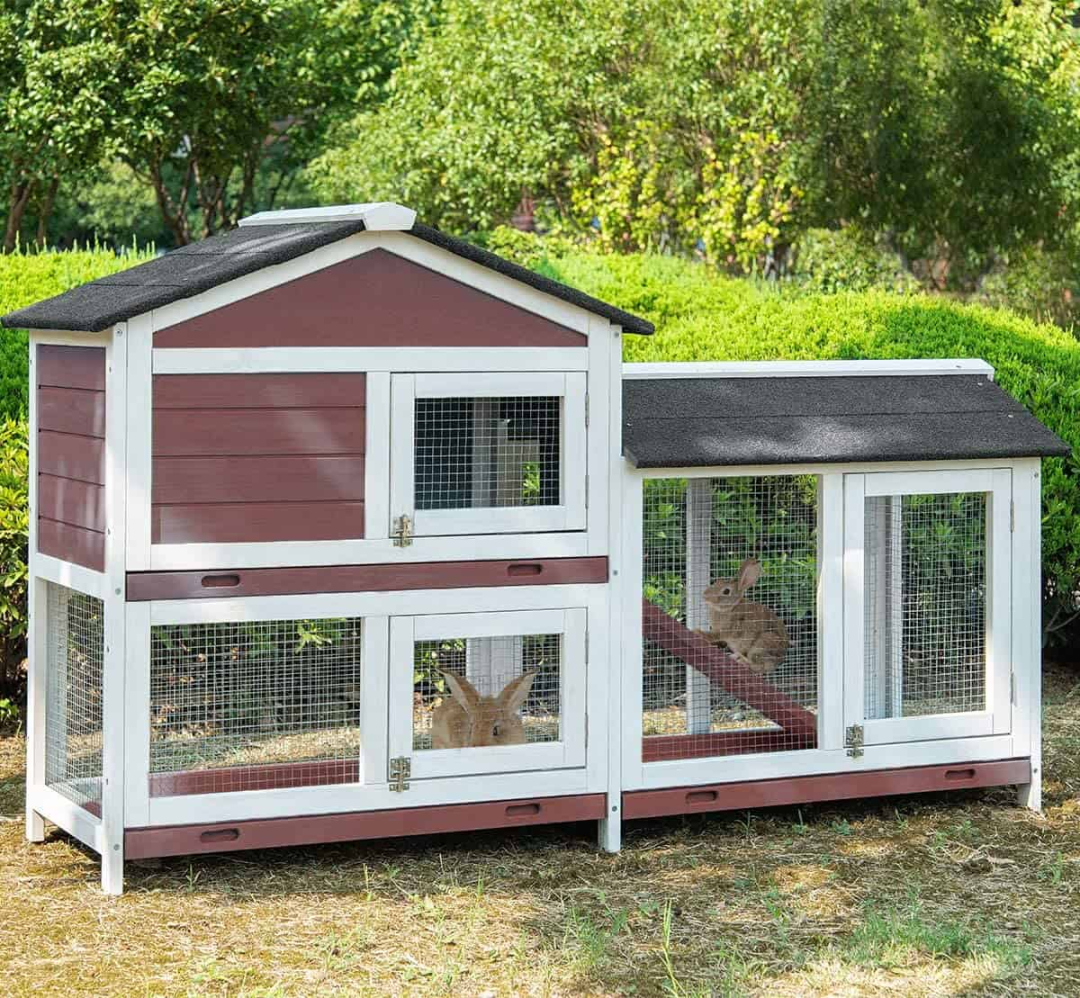What Are Rabbit Homes Called?
Rabbits are small mammals that are found in various parts of the world. They are known for their fluffy fur, long ears, and twitchy noses. Rabbits are burrowing animals and therefore require a suitable habitat to live in. In this article, we will explore what rabbit homes are called and how they provide a comfortable living space for these furry creatures.

Habitats for Wild Rabbits
Wild rabbits, also known as cottontails, have a natural instinct to burrow. They create elaborate systems of interconnected tunnels and chambers underground, which serve as their homes. These burrows are called warrens. Warrens provide protection from predators, and extreme weather conditions, and serve as a safe space for rabbits to raise their young.
Warrens can range in size from a few meters to several kilometers, depending on the number of rabbits inhabiting them. They usually have multiple entrances to ensure easy escape routes if necessary. Inside the warrens, rabbits construct nesting areas using grass, leaves, and other materials to provide a comfortable environment for their offspring.
Housing for Domesticated Rabbits
Domesticated rabbits, on the other hand, cannot create warrens like their wild counterparts. Instead, they require specially designed enclosures or hutches to provide a suitable living space. These structures are commonly known as rabbit homes or rabbit hutches. Rabbit hutches are typically made of wood and wire mesh to ensure proper ventilation and security.
Rabbit homes come in various sizes and designs to accommodate different breeds and sizes of rabbits. They consist of two main parts: the living area and the exercise area. The living area is a smaller enclosed space where the rabbit can rest, sleep, and eat. It usually includes a separate nesting box where the rabbit can retreat for privacy and comfort.
The exercise area is a larger open space connected to the living area. It allows the rabbit to stretch its legs, hop around, and engage in natural behaviors like digging and exploring. The exercise area is usually covered with wire mesh to prevent the rabbit from escaping while still allowing it to enjoy fresh air and sunlight.
Key Features of Rabbit Homes
When selecting a rabbit home, there are several important features to consider. These features ensure that the rabbit’s needs for comfort, safety, and stimulation are met:
- Size: The rabbit home should be spacious enough to allow the rabbit to move around freely and exhibit natural behaviors. A minimum size requirement is around 4 square feet for smaller breeds and 8 square feet for larger breeds.
- Materials: The materials used in the construction of the rabbit home should be safe and non-toxic. Wood and wire mesh are common materials used for rabbit hutches.
- Ventilation: Proper ventilation is crucial to ensure fresh air circulation and prevent the buildup of ammonia from urine. The wire mesh sides of the rabbit hutch help with ventilation.
- Accessibility: The rabbit home should have easy access points for cleaning, feeding, and interaction with the rabbit.
- Security: The rabbit home should be secure to protect the rabbit from predators and prevent its escape. Strong wire mesh and sturdy locks are essential.
- Weather Protection: The rabbit home should provide adequate protection from harsh weather conditions such as rain, wind, and extreme temperatures.
FAQs about Rabbit Homes:
1. Do wild rabbits use the same warren for their entire lives?
No, wild rabbits often change their warrens to avoid predators or if their current warren becomes damaged or infested with parasites.
2. Can rabbits be kept indoors without a hutch?
Yes, rabbits can be kept indoors, but they still require a designated space that provides them with enough room to move around and exhibit natural behaviors.
3. How often should a rabbit hutch be cleaned?
A rabbit hutch should be cleaned at least once a week. The bedding should be replaced, and any waste or uneaten food should be removed to maintain hygiene.
4. Can rabbits share a hutch?
Rabbits can share a hutch if they are compatible. However, it is important to provide enough space and resources to prevent territorial conflicts.
Rabbit homes, whether in the form of warrens for wild rabbits or hutches for domesticated rabbits, play a vital role in providing a safe and comfortable living environment. It is essential for rabbit owners to ensure that the chosen rabbit home meets the necessary requirements to promote the well-being of these adorable creatures.
Related Articles…
Copyright Notice:
The images displayed here are sourced from the internet, with copyrights held by respective owners. For removal of any copyrighted image, please email us.